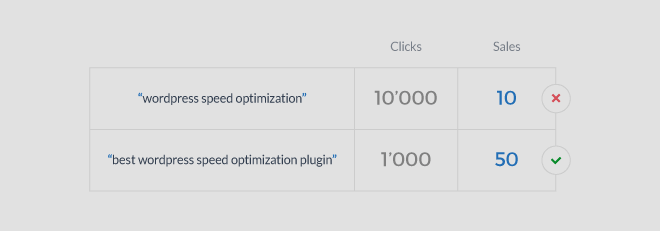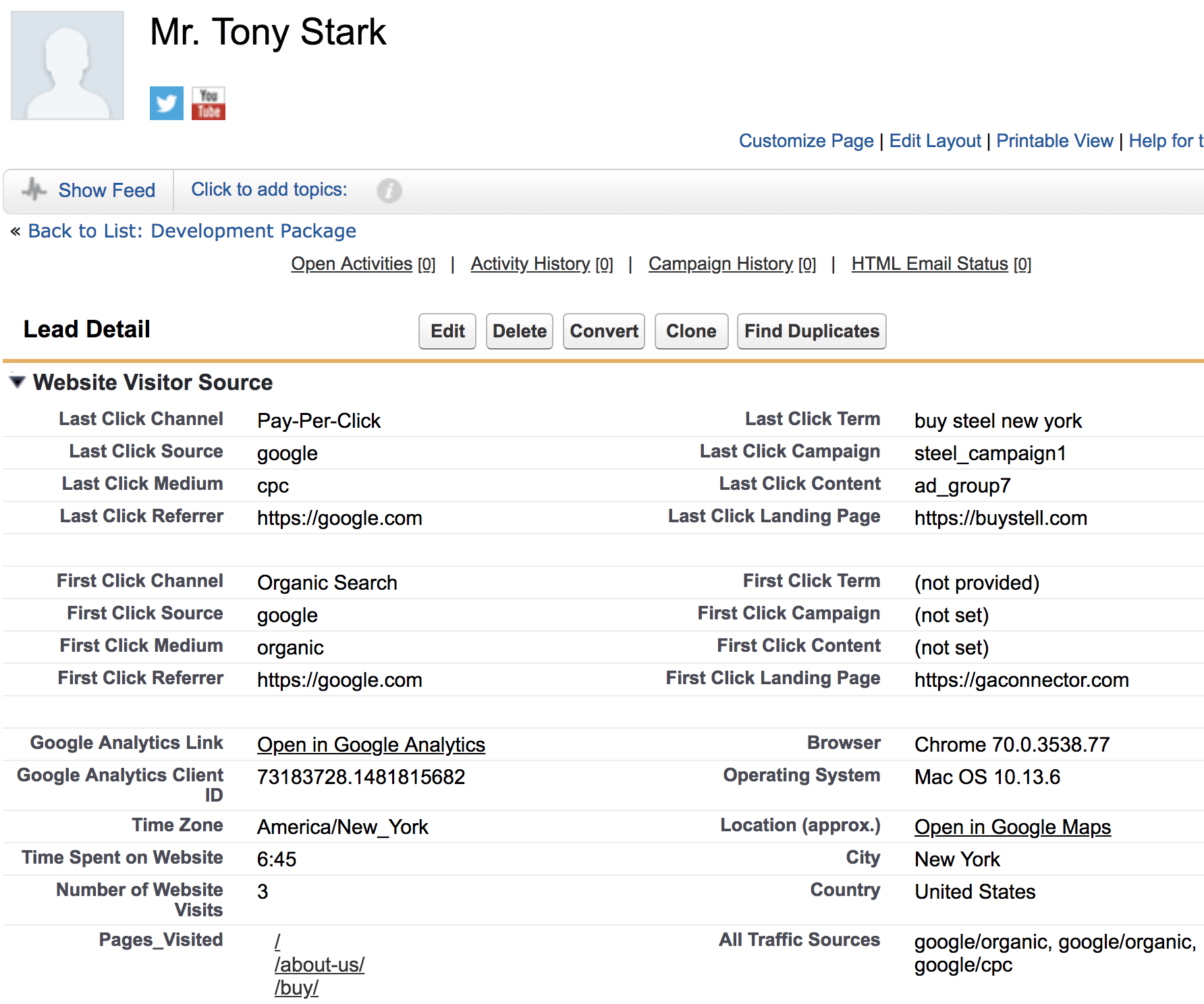In this article, we’ll talk about how you can maximize the ROI of your SEO (Search Engine Optimization) and content marketing.
What is SEO ROI?
Simply put, SEO ROI is a metric that shows how much money was generated compared to your marketing investment. If SEO ROI is negative, you’re losing money. If it’s positive, you’re generating more money than you spend.
SEO ROI is calculated like this:
SEO ROI = (Gross Profit – SEO Investment) / SEO Investment
Why ROI is the most important SEO metric
So the problem is that in digital marketing in general, and especially in SEO, is that a lot of people are used to measuring results by looking at sessions from organic traffic, clicks, keyword rankings, click-through rate etc. Why? Because that’s what Google Search Console and Google Analytics provide us with!
However, these are vanity metrics, and they can be extremely misleading when you’re trying to estimate your SEO ROI, and here is why.
Let’s say you’re doing content marketing for one of these WordPress plugins that help you optimize page speed, just as an example.
Every time to decide to create a new piece of content, you have two options.
Option #1: you can create generic content about WordPress. It can even go viral and generate lots of views.
But how many of these people will actually buy your speed optimization plugin?
Sure, some of them may read your WordPress article and see a popup about your speed optimization plugin and decide to buy it.
But it will probably only be a small percentage.
Option #2: you can create content specifically about WordPress speed optimization.
Even if this content doesn’t attract a lot of visitors, it is very likely to convert extremely well.
Because the people who are interested in a WordPress speed optimization article, are very likely to be interested in a solution that solves this problem.
In the next section, we’ll dive deeper and explain why this happens and how you can apply this to your content marketing and SEO strategy.
Stages of awareness
Before making a purchase, people go through different stages:

- First, they aren’t even aware of the problem, not to mention the solution. They go through life thinking about other things, solving other problems. And it’s usually quite hard to convince people to make a purchase at the stage.
- Then, people become aware of the problem. In our WordPress speed optimization example, maybe they started getting complaints that the website is too slow. Or maybe they read a new study about the increasing importance of website speed for Google rankings.
- Next, they become solution aware and are seeking to understand why the solutions work.
- Finally, they are almost ready to buy and just want to understand which solution will work for them.
Obviously, the deeper someone is in the funnel, the more likely they are to buy. Not only the people in the late stages convert better, they are also easier to sell to. They usually require shorter sales cycles and generally are less work for your sales team.
How to find topics that attract people on the right stages
It’s usually easy to distinguish keyword phrases by the awareness stage intuitively.
In our WordPress plugin example, someone who is problem-aware will search for terms like “website speed and google ranking” or maybe “website speed checker google”.
A solution-aware person would search for something like “wordpress speed optimization”.
Someone who’s comparing different solutions would be searching for something like “best wordpress speed optimization plugin”.

Of course, the keywords with the highest intent may be the ones that are the hardest to rank for (although it’s not always the case).
In which case you may want to take a step back. For example, if solution comparison keywords are too competitive, you may want to find more keywords from the “solution aware” phase to put your SEO efforts in.
The fastest way to add more sales through SEO
However, the fastest way to add more sales through SEO is to check the stats of the keywords you already rank for, and then double down on the keywords that convert the best.
This part is tricky though, because in 2011 Google has stopped showing organic keywords. You can’t even see which keywords result in more conversions anymore.
The are some tools that can help you solve this (to a degree). For example, Keyword Hero. It tries to match your traffic’s keywords with the sessions in Google Analytics.
But the problem with using this approach alone is that it only gives you visibility until the user leaves the website. And if your sales process doesn’t end on the website, you end up not knowing which inquiries resulted in sales.
You see, same as lots of visitors don’t necessarily translate into lots of leads, lots of leads also don’t necessarily translate into sales. That’s why you need to know for sure, which keywords are the buyer keywords.
SEO ROI Calculation
To measure which keywords are the buyer keywords, you can use our tool called GA Connector. It lets you see the source of your sales: whether someone came from Google Organic search results or another source, and also which landing page did they see. Which in turn allows you to guess with a high degree of certainty which keyword brought this sale.

You can start a free trial of GA Connector here.



